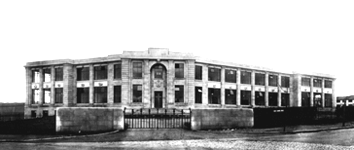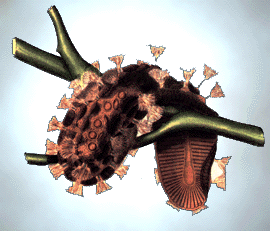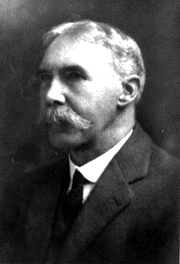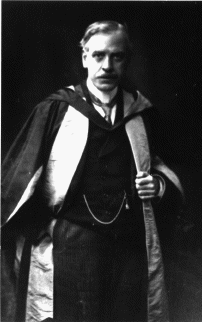
|
The Early Years and the Founding of the Chair of Zoology (1876-1919) As the twentieth century approached, the Professors of
Natural History were faced with a problem additional to that
of having to re-establish a collection, that of lack of
space. This part of the history traces the moves that led to
the building of the Ashworth Laboratories to house the
Department of Zoology at the King's Buildings on West Mains
Road, as well as giving a brief insight into the acquisition
of the current collection and its contributors.  So that the reader can understand subsequent events more clearly, the major differences between University life in Victorian times and today will be briefly described here. In Victorian times, professors were responsible for all the lectures in their subject. If they employed an assistant, they had to pay them from out of their own salaries. Students were required to attend lectures, record them diligently and submit their notes for checking by the Professors. It was only towards the end of the nineteenth century that the increasing growth of knowledge caused the University itself to employ additional staff as lecturers and the different departments began to emerge as seen today with a number of specialist lecturers as well as a Professor.
In 1876, Wyville Thomson returned from the 'Challenger' expedition to find that the museum had appointed its own Keeper - Ramsey Heatley Traquair - to the original University collection to which the University was now denied access. Again, the University had to rely upon the space within Old College buildings for storing the few specimens still in its possession, mostly duplicates of those in the Museum of Science and Art and some from the voyages of Challenger. Although the specimens from 'Challenger' were destined for the British Museum, Wyville Thomson kept a few specimens for the University which are still present in the collection. These include several sponges, a sea-squirt and a few samples of Globigerine, Pteropod and Radiolarian ooze dredged from the sea floor.
This situation in no way satisfied the needs of the department and when James Cossar Ewart succeeded Wyville Thomson as Professor of Natural History in 1882, he assumed the task of acquiring a new collection. It was while Cossar Ewart held the Chair of Natural History that one of the most dynamic characters entered the history of the Department of Zoology and the University's Natural History collection: James Hartley Ashworth, appointed Lecturer in Invertebrate Zoology in 1901. In 1919, the University Court instituted the Chair of Zoology. Whilst Ewart continued to preside over the vertebrates, this new Chair was filled by Ashworth and he covered aspects of invertebrate life, including Entomology, Marine Biology and Parasitology. It was largely due to Ashworth's qualities as a speaker and organiser that the funds for the new Department of Zoology at The King's Buildings were raised. During the time that a collection was re-established in Old College, stories arose that would seem to suggest University life at this time was not as coldly disciplined as might first be imagined. John Sloan, a student of Professor Ashworth's in the late 1920's, recalls his father telling him of a time when he was employed as Professor Cossar Ewart's assistant in the Old College buildings; "... my father was in the habit of putting numbers of specimens on the roof to macerate. On one festive occasion which was, I think, a national election, some students managed to get up onto the roof and were delighted to find large numbers of smelly objects which were found to be most suitable missiles to hurl at rivals in the quad. below. This they did to the great loss of the Zoology museum".
With Ashworth now lecturing on the invertebrates, Cossar Ewart continued to cover the vertebrate groups. He was not a good lecturer and clearly had grave problems with discipline in his classes. Cossar Ewart wore a heavy moustache of the walrus type. Sir Maurice Yonge, who attended his lectures in the Old College, recalled some in which the uproar was so intense that it was possible to tell that the poor man was still trying to lecture only because his moustache continued to move up and down. Nevertheless, Cossar Ewart was a considerable scientist. A Fellow of the Royal Society he carried out beautiful work on the embryonic development of the horse and conducted numerous experiments on his estate - the so called Penicuick Experiments - on the hybridization of zebras and horses. He was a pioneer in domestic animal improvement by selective breeding and in the study of animal reproduction. It was largely due to his presence in Edinburgh that the University was chosen as the site for an institute of Animal Genetics, one of the first such in the world. This decision was later to have a profound effect on the development of Edinburgh as a major centre of biological research and teaching. |









 Because of the dynamic nature of Ashworth and his crucial
role in getting a new building for the Zoology Department
and its collections, Cossar Ewart has tended to be
overlooked.
Because of the dynamic nature of Ashworth and his crucial
role in getting a new building for the Zoology Department
and its collections, Cossar Ewart has tended to be
overlooked.